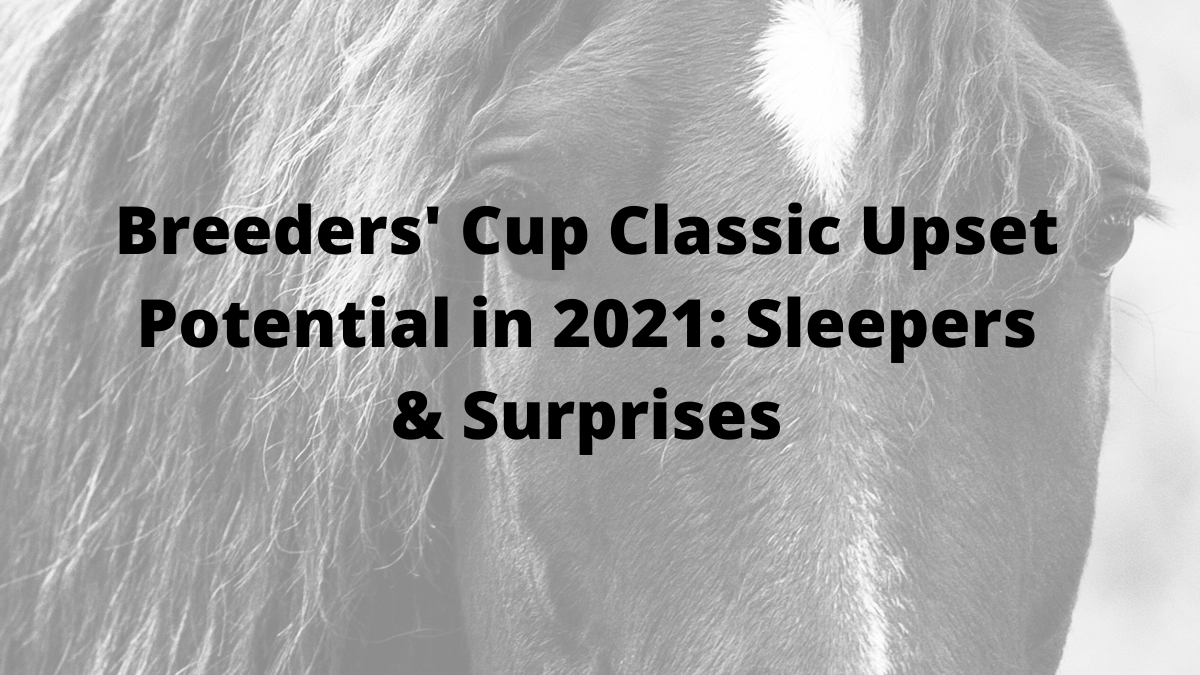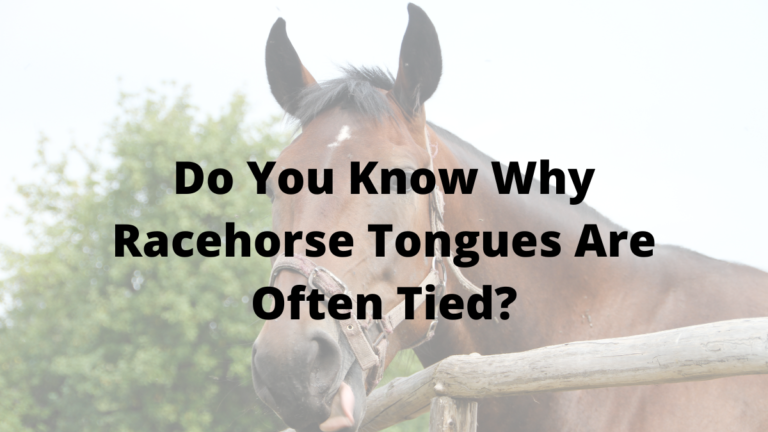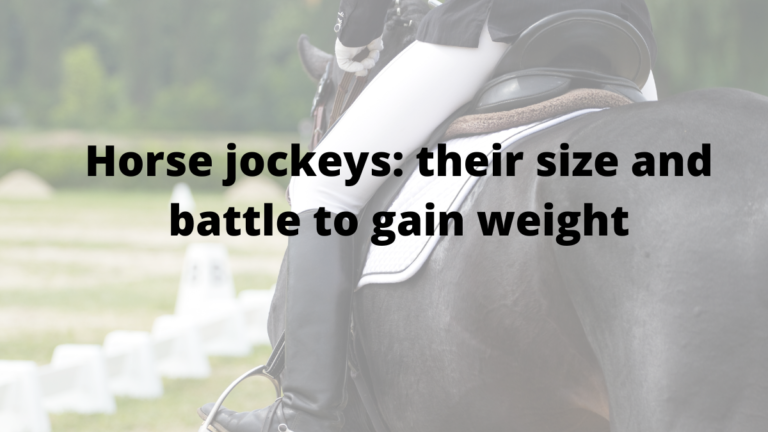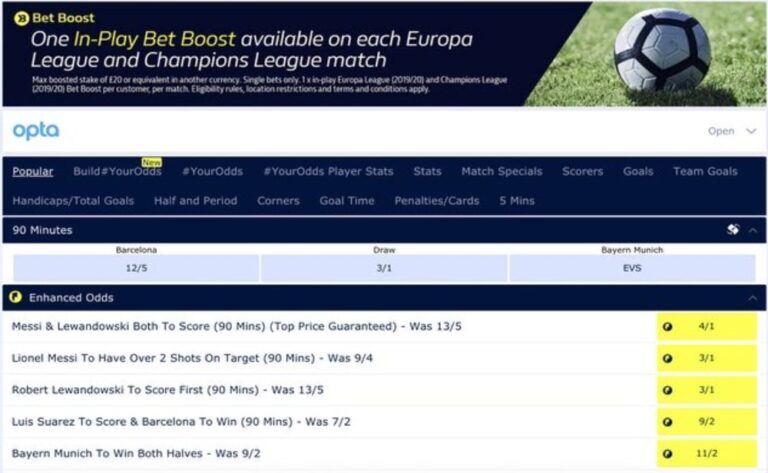Breeders’ Cup Classic Upset Potential in 2021: Sleepers & Surprises


There is always the added excitement, however remote, that some unnamed colt or filly may go from goat to GOAT in the space of two minutes, making even the largest and most lucrative horseraces in the world thrilling.
And fortunately for us, cunning gamblers that we are, the improbable occurs rather frequently in horse racing. There have been many unexpected victories throughout history, and I’ve just so happened to have discovered the seven largest (pronounce it “profitable”) surprises in the annals of thoroughbred horse racing.
1993 Breeders’ Cup Classic: Arcangues
Please don’t feel too bad; Jerry Bailey, his first Yankee jockey, also had pronunciation issues with his name. This is “ar-KONG.” Heck, I didn’t even know. Speaking English with a Pepé Le Pew accent, such as “Ah shot you wiz zee ack-ack of love,” demonstrates my fluency in French.
Oh, and Bailey also had difficulty comprehending the last-minute orders of Andre Fabre, the French trainer of Arcangues. However, 1993 was the year that Arcangues would become well-known. With respect and accuracy.
Arcangues was bred in Kentucky by Allez France Stables Ltd., a French company, and spent the majority of his early racing career on French turf tracks, where he won several graded stakes for his French owner, art dealer Daniel Wildenstein, including the prestigious Prix d’Ispahan (Group I) at Longchamp.
But when the ex-pat went to the US to try his luck in the most lucrative Breeders’ Cup stakes race—the Classic—his winning reputation in France won him no love.
The 14-horse field on that Saturday at Santa Anita, which featured champions like Bertrando, the 1/1 favorite, must have overawed the oddsmakers.
As was to be expected, Bertrando took the lead and maintained it for seven brilliant furlongs as Arcangues lagged at the rear of the pack in the arduous mile-and-a-quarter race.
Then, the unthinkable occurred: Bertrando started to lose strength just as Arcangues launched his bid by accelerating along the rail to take the lead. Arcangues finished two lengths in front of Bertrando at the finish line.
That $2 win ticket you purchased on Arcangues gave you $269.20, whether due to foresight, wisdom, or just a whim. If you were wondering, this is still the biggest upset in Breeders’ Cup competition history.
Jim Dandy, 1930 Travers Stakes
Even though there were just four participants in the starting gate, Jim Dandy was 100-1 to lose. The Travers Stakes, one of the oldest and most famous races in the nation, took place in 1930.
The Travers Stakes, the oldest race for three-year-old thoroughbreds in the nation, was first raced in 1864 and was dubbed the “Travers Mid-Summer Derby” in the 10-cent program for the 1930 edition.
It was also one of the “must-see” events of 1930; according to various sources, the crowd size ranged from 30,000 to 50,000. It was also one of the first thoroughbred horseraces to be carried live on the radio. Franklin D. Roosevelt, the governor of New York at the time, viewed the competition from the infield.
Four horses were at the starting gate. The second horse in history to win the Triple Crown of thoroughbred racing earlier in the year, Gallant Fox, was given 1-2 odds.
There was Which one, who was regarded as his sole major rival in the Travers after finishing second to Gallant Fox in the Belmont Stakes. Sun Falcon finished in the money in a few races for smaller purses and was given no better than 40-1 odds in the Travers.
That leaves Jim Dandy, a somewhat mediocre colt who had managed to win the Grand Union Hotel Stakes as a two-year-old despite muddy conditions but had only earned money once in ten starts up of this poinpoint1930. At 100-1 odds, he was the first to enter.
On August 16, it started to pour severely in Saratoga Springs. While Gallant Fox and Which one did compete for the lead throughout the first mile, they opened wide away from the rail in the final two furlongs, allowing the mud-loving Jim Dandy an advantage for the finish line.
In the 1930 Travers Stakes, Jim Dandy finished six lengths in front of Gallant Fox and 12 sizes ahead of Which one.
Donerail, 1913 Kentucky Derby
When the 91-1 longshot Donerail defeated seven other thoroughbreds to win the 39th Kentucky Derby back in 1913, it was the most significant and possibly best-known horseracing upset ever.
Although the late withdrawal of four of the competitors reduced the original 12-horse field to eight, there were still seven of the nation’s fastest thoroughbreds to beat.
It’s interesting to note that Donerail’s breeder, owner, and trainer, Thomas P. Hayes, needed Roscoe Goose’s help convincing him to enter the three-year-old colt in the Derby. Hayes conceded that Donerail had achieved some earlier victories on the track, but he reasoned that this was one of the most competitive races in the nation, if not the entire world.
Even though he ultimately followed Goose’s suggestion and entered Donerail in the race, he advised the jockey to “get a portion of the money” rather than “go quickly and win” or, in other words, cross the finish line.
Goose’s plan was immediately apparent as the starting gate slammed open: keep Donerail slightly outside while keeping as close a distance as possible between them. Goose instructed Donerail to put on the pressure as they entered the home stretch. Donerail enthusiastically obliged, overtaking Ten Poinpointthe closing yards of the race and winning by a half-length.
It may not seem like much, but in 1913, your $2 wager on Donerail for the Derby would have returned $184.50 to your bankroll, which was over half the price of a brand-new Ford.
2002 Belmont Stakes winner Sarava
The Kentucky-born Sarava was shipped to England for his initial races, but after three also-rans, he was sent back to the US to train with Burk Kessinger, under whose guidance Sarava broke his maiden at Churchill Downs in November 2001. Burk Kessinger is a well-known American trainer.
Unfortunately, after that debut victory, his performance declined, leading New Phoenix Stable to believe Sarava would benefit from a different training regimen. As a result, Kenneth McPeek was hired to train Sarava in 2002, and her victory in the Sir Barton Stakes (Listed) at Pimlico almost immediately proved their choice to do so
Sarava was lined up at Belmont Park’s starting gate a month later alongside a dozen other gifted competitors. Edgar Prado, who had rode him to victory in the Sir Barton Stakes, was in the saddle. With his inconsistent performance in England and the US, the oddsmakers and touts weren’t overly enthused, and Sarava started the race at 70.25/1.
As a side note, Artax Too, the only horse to enter the race with longer odds, came in last place.
For the first mile, Sarava remained in the middle of the field. She took the lead heading into the stretch, finishing half a length in front of Medaglia d’Oro, a horse with longer odds and far ahead of War Emblem, the Kentucky Derby and Preakness winner of the year and the betting favorite to win the Triple Crown at Belmont.
A two-dollar win ticket on Sarava, which had post-time odds of 70.25, paid out $142.50.
2011 Breeders’ Cup Mile, Court Vision
Given that Court Vision had likewise run his way through his previous six races, all at the stakes level, the 65-1 odds with which he entered the Breeders’ Cup Mile (Grade I) at Churchill Downs were almost definitely justified.
Yet there he was, waiting for the barrier to open with jockey Robby Albarado, at gate No. 9. When it happened, Court Vision acted as per usual and lagged behind the rest of the group. Until the stretch, that is, when he moved up to the fourth place. And kept catching up to Turralure, the leader.
Court Vision took the lead during the last furlong, and he prevailed by a nose over Turralure in second place at the finish line. The Irish import Goldikova, the early favorite in the event, came in third.
The post-time odds on Court Vision were 64.80-1, and a two-dollar win ticket on him paid out $131.60.
Breeders’ Cup Distaff in Spain, 2000
More so than her qualities, Spain’s lengthy odds of winning the Breeders’ Cup Distaff in 2000 were caused by the more illustrious reputations of her rivals. After all, the bay filly had won both the Turfway Breeders’ Cup Stakes (Grade III) and the Monmouth Breeders’ Cup Oaks (Grade II) earlier that year.
However, Riboletta, the clear favorite for the Distaff, started at 0.40-1, which is about as close to a near-certainty of victory as possible. Because of these odds, practically every other horse in the starting gate fell into the longshot category.
Nevertheless, Spain and the 10-1 Surfside were in the lead when the barrier crashed open, and the fillies broke, with Surfside holding the information for the opening three-quarters of a mile.
Spain, skillfully steered by Victor Espinoza, took the lead in the final stride, and the duo crossed the finish line ahead of Surfside by a length and a half. Rigoletto, too? She came in eighth place overall.
At 55.90-1 odds, Spain broke, and a $2 victory bet would have netted you $113.80.
Breeders’ Cup Turf winner Lashkari in 1984
The UK-born Lashkari, who was raced mainly in France and was owned by Shah Karim al-Husayni (also known as Aga Khan IV), only made two trips to the US to compete in the Breeders’ Cup Turf (Grade I).
He traveled to the US in 1984 just for the Turf’s first race. Alain De Royer Dupre, his trainer, and jockey Yves Saint-Martin were with him.
Like Spain (above), Lashkari’s 53-1 odds were more a result of the favorite’s relative popularity than any shortcomings on his part. Before his first trip to the US, he had won all three of his starts, including the Prix du Conseil de Paris (Group 2) at Longchamp. In other words, he possessed street cred, but in the US, French street cred isn’t worth much. Therefore Lashkari started the race at 53/1 odds.
As the race continued, it appeared that the bookmakers’ lack of confidence in Lashkari was warranted as the horse fell behind the rest of the pack. The 1983 Horse of the Year, All Along, led the race until a late rally brought Lashkari level with him.
Everyone who had a two-dollar winning ticket with Lashkari’s name on it received an estimated $108 after he crossed the finish line just ahead of All Along.
If you liked this, be sure to browse more of our horse racing content in our past.





